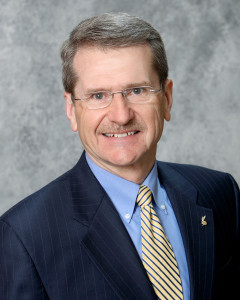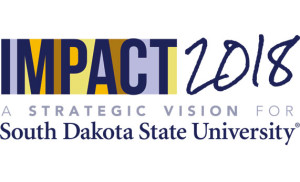My two previous columns for STATE Magazine have focused on the development of “IMPACT 2018: A Strategic Vision for South Dakota State University,†the five-year strategic plan that takes effect July 1, and the  importance of other administrative initiatives to support the new strategic plan.
importance of other administrative initiatives to support the new strategic plan.
As I noted in the magazine’s last issue, the new strategic plan will emphasize student learning and degree completion, discovery and new knowledge, outreach and community, and stewardship of resources. Those goals, in some regard, are expectations of a comprehensive teaching and research university.
The research function — a foundational element of land-grant universities — starts with faculty ideas and the innovations and new technologies derived from exploring those ideas. The end result of the best ideas is the commercialization of that new intellectual property in ways that benefit the inventor/researcher, the university, the business that licenses the new technology, and ultimately the state.
In between, the university’s strengthening research infrastructure provides the place to nurture new ideas, to test theories, and to engage private partners. University-based research is true economic development from the ground level.
University-based discovery, particularly the answers to questions that reach across multiple disciplines, also promises to address the really complex problems of today and tomorrow.
IMPACT 2018 includes aspirations for growth in research funding that is dependent on more and better interdisciplinary biosciences and engineering team-based collaboration and new approaches to both government-granting agencies and industry partners. A detailed study shows the university has capabilities and experiences to mobilize bioscience and engineering teams to attract external funds that successfully address three grand challenges — feeding a growing population; human and animal health; and sustainable, renewable energy.
In order to meet those grand challenges, university leaders continue to build the infrastructure necessary to support interdisciplinary research — the best and brightest faculty scientists each contributing from his or her subject area. Implementing the proposed interdisciplinary biosciences and engineering research initiative, complete with core research equipment and ultimately modern, flexible facilities, is a key performance indicator of the IMPACT 2018 strategic plan. More importantly, this initiative will influence directly the university’s long-range success in research.
 This issue of STATE magazine shines a light on food research, just one area where researchers already are working across disciplines. Dean Barry Dunn, from the College of Agriculture and Biological Sciences, has mentioned frequently the need to address the grand challenge of feeding the world’s population, at 7 billion people today and forecast at 9 billion people in the year 2050.
This issue of STATE magazine shines a light on food research, just one area where researchers already are working across disciplines. Dean Barry Dunn, from the College of Agriculture and Biological Sciences, has mentioned frequently the need to address the grand challenge of feeding the world’s population, at 7 billion people today and forecast at 9 billion people in the year 2050.
The stories in the following pages provide a glimpse into the ways in which food-related research at SDSU has an impact regionally, nationally and globally. As I write, other researchers are looking at the complex issues in animal health, alternative energy sources, climate change, decision analytics, exercise sciences and several other disciplines. The growing research function and emerging infrastructure will enable more of these faculty to work together in solving the grand challenges.
•••
For alumni and friends who want to read more about the IMPACT 2018 strategic plan, I encourage you to check the university’s website. A landing page (http://www.sdstate.edu/impact2018/) provides links to the goals and the document with the accompanying performance indicators.
David L. Chicoine, Ph.D.
President
Class of 1969






